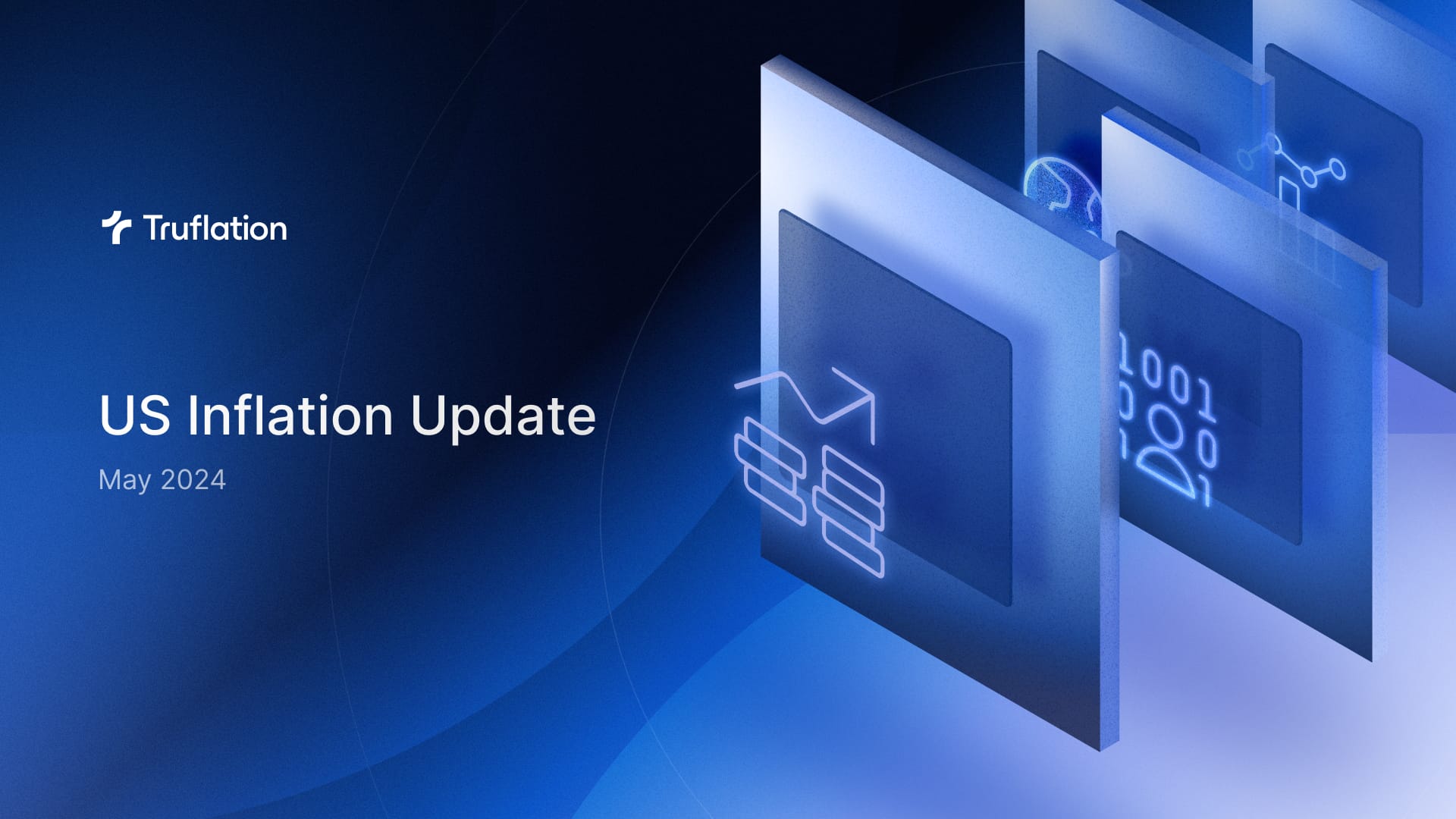Public Peek: Truflation US Inflation Update for May 2024

The following is a public peek at our exclusive monthly CPI update, available in full (13 pages+) by subscription, here.
Recent inflation trends
Over the last couple of months, US inflation has been holding relatively stable, while consumer spending has weakened. The data suggests that the elevated pace of price increases could last longer than expected, but it appears more likely that tepid consumer spending will keep a lid on inflation in the months ahead.
Restraining demand continues to be the key target for policymakers as they strive to gently drive inflation back down to its 2% target without tipping the economy into a recession – a delicate balance. The year-over-year (YoY) inflation, as reported by the BLS, rose to 3.2% in February and again to 3.5% in March before holding relatively steady at 3.4% in April.
Meanwhile, some key economic indicators are pointing to an economic softening. For example, business activity in the US manufacturing sector contracted at an accelerated pace in May, with the ISM Manufacturing PMI dropping to 48.7 from 49.2 in April, compared to a projected rise to 49.6. In general, readings below 50 indicate a contraction.
Read the Entire May 2024 Inflation Update
In addition, there were 8.059 million job openings on the last day of April, as reported by the BLS JOLT survey. This not only marks a drop from 8.35 million in March 2024, but also came in well below expectations of 8.34 million. This is the lowest level we have seen since February 2021, but this number has been gradually reducing over the last six months, suggesting that the demand for labor is certainly coming down. This is also evident from the overall decline in the number of job openings and the extremely low hiring rate. While the number of layoffs has remained low, businesses are looking to cut labor costs by pulling back on hiring new workers, which points to an ongoing normalization between supply and demand for labor.
The latest employment report from the BLS shows that the labor market added 272,000 non-farm jobs in May, significantly more than the 180,000 expected. The majority of these jobs were added in the healthcare sector, the leisure industry, and the government. However, the unemployment rate rose to 4% from 3.9% the month prior. This highlights the difficulty the Federal Reserve faces in determining when to lower interest rates and how quickly.
Monthly retail sales remained flat in April compared to the previous month, marking a definitive slowdown of spending compared to March and February, when retail sales grew by 0.6% and 0.4% month-over-month (MoM), respectively. This does not mean that consumers have stopped spending, though. Rather, for once, it indicates a break in the unstoppable consumption growth trend.
Read the Entire May 2024 Inflation Update
Consumer spending, which accounts for more than two-thirds of US economic activity, increased by 0.2% MoM in April, down from a 0.7% MoM increase in March. People have been feeling the pinch of higher prices for a while, and it finally appears to be coming through in their spending habits, which is encouraging news for a slowdown in inflation. This coupled with a 0.2% increase in Disposable Personal Income in April, while savings rates held steady at 3.6%, might just mean consumers are taking a breather.
Chart 1: US Personal Consumption
Source: Bureau of Economic Analysis, Personal Income and Outlay Report

